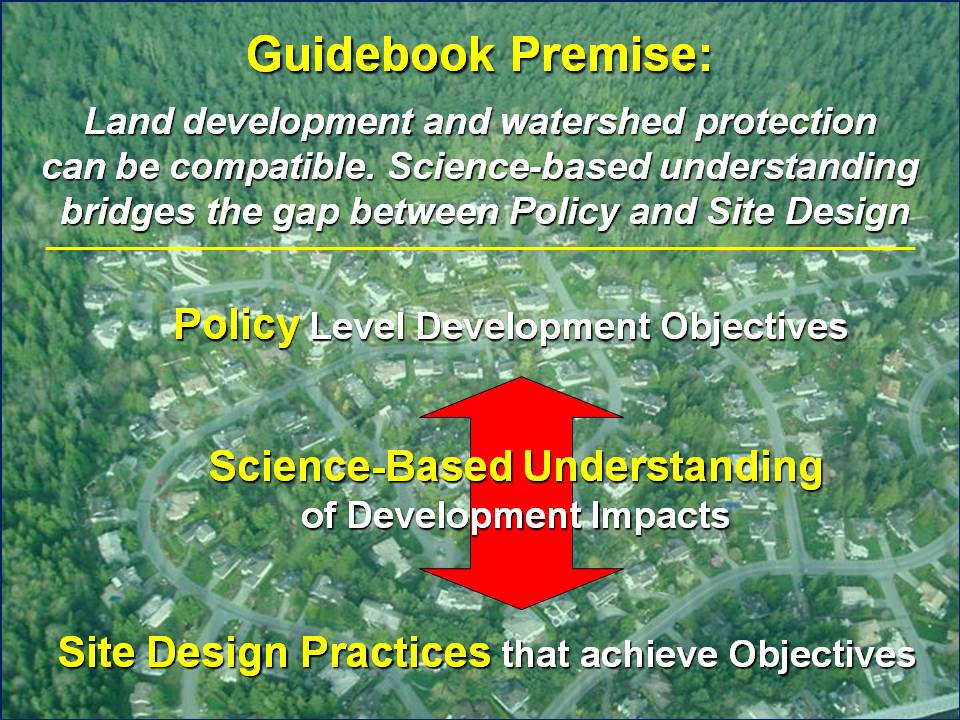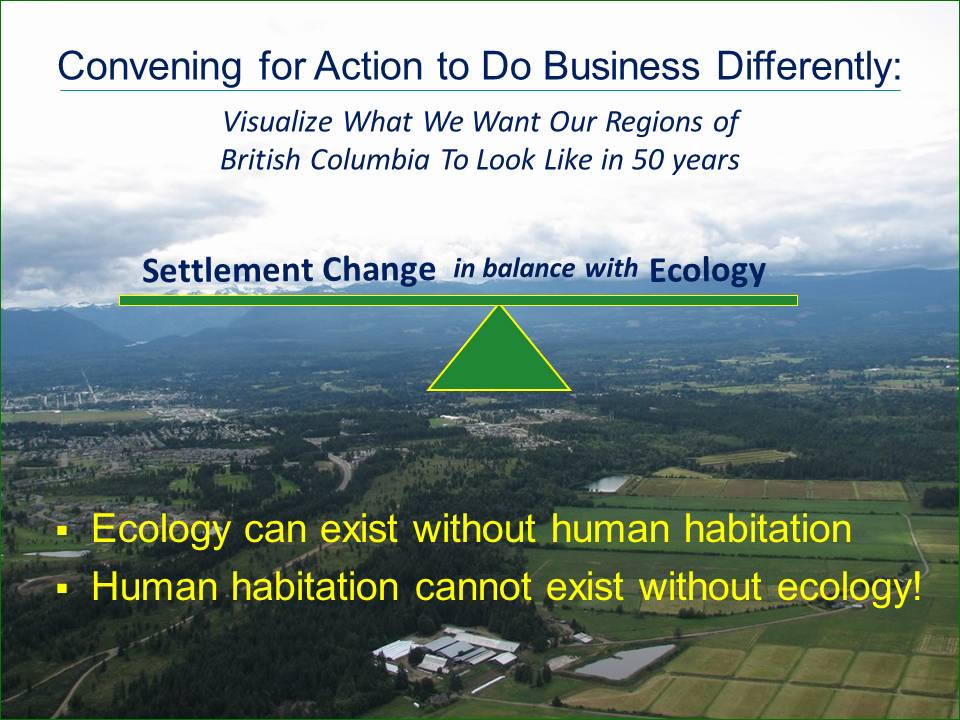Beyond the Guidebook 2010: Moving from Awareness to Action to Achieve Water Sustainability in British Columbia
Note to Reader:
Beyond the Guidebook 2010: Implementing a New Culture for Urban Watershed Protection and Restoration in British Columbia describes how a ‘covening for action’ culture has taken root in British Columbia. Bringing together local government practitioners in neutral forums has enabled implementers to collaborate as regional teams. Their action-oriented focus has resulted in ‘how to dit it; examples that help decision-makers visualize what ‘design with nature’ policy goals look like on the ground.
Beyond the Guidebook
‘Beyond the Guidebook 2007’ foreshadowed Living Water Smart, British Columbia’s Water Plan and the Green Communities Initiative, both of which were launched by the Province in 2008. These established an over-arching provincial ‘design with nature’ policy framework. There is now clear guidance for aligning local actions with provincial and regional goals.
Action-Oriented Focus
“In 2002, Stormwater Planning: A Guidebook for British Columbia advanced this provocative premise: land development and watershed  protection can be compatible. This radical shift in practitioner thinking resulted from recognition of HOW a science-based understanding could bridge the gap between high-level policy objectives and site design practices,” states Kim Stephens, Program Coordinator for the Water Sustainability Action Plan for BC. He was principal author of the Guidebook.
protection can be compatible. This radical shift in practitioner thinking resulted from recognition of HOW a science-based understanding could bridge the gap between high-level policy objectives and site design practices,” states Kim Stephens, Program Coordinator for the Water Sustainability Action Plan for BC. He was principal author of the Guidebook.
 “Now, ‘Beyond the Guidebook 2010’ connects the dots between RAINwater Management and Drought Management and shows how to achieve water sustainability through outcome-oriented urban watershed plans,” observes Eric Bonham, a member of the CAVI Leadership Team (where CAVI is the acronym for Convening for Action on Vancouver Island). A former Director in the Ministry of Municipal Affairs, Eric Bonham was a member of the Guidebook Steering Committee.
“Now, ‘Beyond the Guidebook 2010’ connects the dots between RAINwater Management and Drought Management and shows how to achieve water sustainability through outcome-oriented urban watershed plans,” observes Eric Bonham, a member of the CAVI Leadership Team (where CAVI is the acronym for Convening for Action on Vancouver Island). A former Director in the Ministry of Municipal Affairs, Eric Bonham was a member of the Guidebook Steering Committee.
“Bringing together local government practitioners in neutral forums has enabled implementers to collaborate as regional teams. Their action-oriented focus has resulted in ‘how to do it’ examples that help decision-makers visualize what ‘design with nature’ policy goals look like on the ground.”
To Learn More:
To read the complete story posted on the Rainwater Management Community-of-Interest, click on Beyond the Guidebook 2010: Moving from Awareness to Action to Achieve Water Sustainability in British Columbia
Posted October 2010



